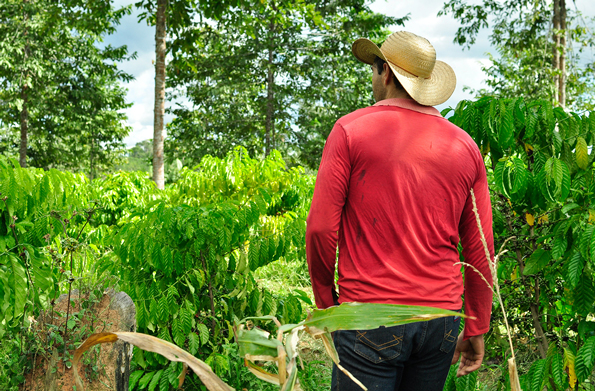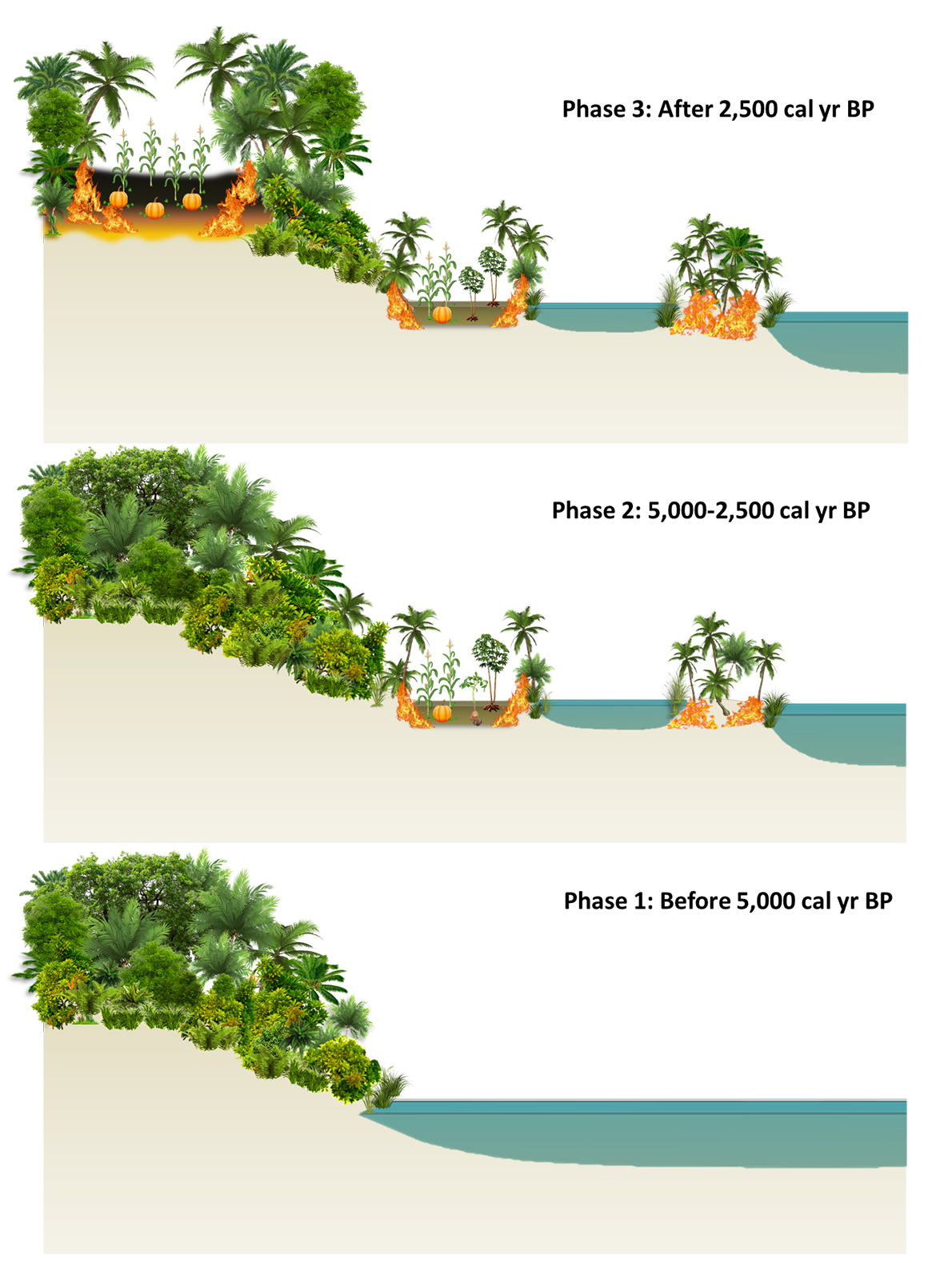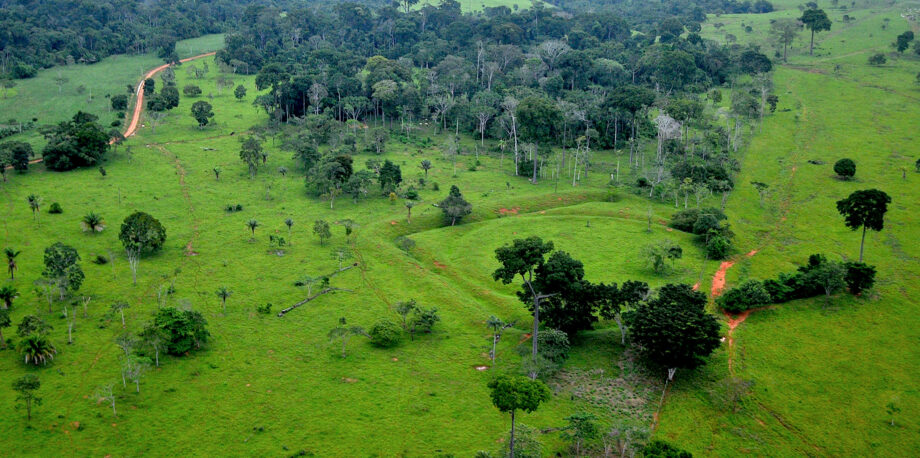Ancient Amazonian Societies Managed the Forest Intensively But Sustainably - Here's What We Can Learn From Them
Author: Kate Evans
Evans, Kate. “Ancient Amazonian Societies Managed the Forest Intensively but Sustainably - Here's What We Can Learn from Them.” Ensia, University of Minnesota's Institute on the Environment, 15 Aug. 2019, https://ensia.com/features/ancient-amazonian-societies-managed-the-forest-intensively-but-sustainably-heres-what-we-can-learn-from-them/.
0 General Document comments
0 Sentence and Paragraph comments
0 Image and Video comments
ANCIENT AMAZONIAN SOCIETIES MANAGED THE FOREST INTENSIVELY BUT SUSTAINABLY — HERE’S WHAT WE CAN LEARN FROM THEM
Photo courtesy of Kate Evans

WRITER
Kate Evans@kate_g_evans
August 15, 2019 — When loggers and cattle ranchers began toppling the rainforest in Brazil’s far western state of Acre, they revealed a mystery: vast ancient earthworks, hidden for centuries under the trees.
These “geoglyphs” took the form of geometric shapes — squares, rectangles and circles — hundreds of meters across, marked out with ditches and raised mounds. Since the 1980s, around 450 geoglyphs have been identified in Acre alone, dating back between 650 and 2,000 years — offering new perspectives on the supposed pristine nature of the Amazon as well as insights into how agriculture and healthy ecosystems might coexist.
The Amazon has long been thought of as an untrammeled ecosystem, a wilderness relatively untouched by humans. Indigenous peoples were presumed to be so few in number, and live so lightly on the land, that they had a negligible impact on the environment.
But recent interdisciplinary research across the Amazon basin is overturning that old story. It’s showing instead that the rainforest’s early inhabitants numbered in the millions, and that they managed the landscape intensively, in complex and sustainable ways — offering lessons for how we manage the Amazon today.


Ancient Agroforestry
Jennifer Watling, currently an archaeologist at the University of São Paulo in Brazil, spent several seasons digging holes in some of Acre’s geoglyphs for her Ph.D. research at the University of Exeter in the U.K.
It is still unclear exactly what the geoglyphs were used for, Watling says. From the lack of household debris, it seems people didn’t live there, but perhaps visited for ceremonies and other special events. New tools, including the analysis of microscopic plant remains called phytoliths, are helping archaeologists find other stories in the soil.

Agroforesters grow crops among trees for benefits such as increased biodiversity and soil health. Of the ancient sites archaeologists are finding in Brazil, one researcher says, “It looks a lot like agroforestry — managing the landscape, encouraging palms and probably other useful plants as well.” Photo courtesy of Icaro Cooke Vieira/CIFOR
“Unlike today, they weren’t just completely denuding the landscape and creating monocultures,” Watling says. Instead, the number of palm trees around the sites increased over time. “It looks a lot like agroforestry — managing the landscape, encouraging palms and probably other useful plants as well,” Watling says.


“The more that we’re digging and looking into plant remains and ecology, the more we’re seeing that actually large areas of the Amazon were inhabited, and people had significant impacts on soils, on ecosystems — and in some areas we can see those impacts today.”
A Crowded Amazon
Similar earthworks have now been found along 1,800 kilometers (1,100 miles) of southern Amazonia. “Everywhere we’re looking, we’re finding people,” says Mark Robinson, also from the University of Exeter, which has been delving into these questions for the past few years.
Robinson and some colleagues were scrolling around the Brazilian state of Mato Grosso on Google Earth, looking at areas that had been recently deforested. “Suddenly we started seeing these big earthworks — hold on, that’s not natural!”


When Robinson’s team went there and started digging, they identified 81 new archaeological sites, mainly ditched enclosures, as well as ceramics and stone tools. “It was a whole culture no one had ever seen before.”
The results, published in Nature Communications, provided the missing link between Acre and the eastern Amazon, Robinson says: “We could show the whole southern rim of the Amazon was occupied.”
Understanding how all those people shaped their environment, and how resilient those ecosystems were to human disturbance, is critical for making informed decisions today, Robinson says.
“Populations in forested areas worldwide, especially in tropical areas, are increasing, so to make sustainable choices about how to interact with resources is going to be really integral,” he says. Research from other parts of the Amazon is raising intriguing suggestions about how to do that.
Edible Forests
Further north, near where the Tapajós River meets the Amazon in the Brazilian state of Pará, another University of Exeter team used techniques from archaeology, botany, paleoecology and remote sensing to investigate how pre-Columbian peoples shaped the landscape around them — and found that they permanently changed the composition of the forest itself.
Alongside traditional archaeological excavations, the team analyzed the soil chemistry, identified phytoliths and other plant remains, surveyed the modern vegetation, and took sediment cores from nearby Lake Caranã to track changes in pollen and charcoal over time.
Published in Nature Plants, the researchers’ study shows that for millennia, the area’s inhabitants had practiced a diversified land use strategy akin to what we now call “polyculture agroforestry” — growing a wide variety of food crops while keeping trees and forests standing.




The authors of one study created a conceptual drawing of the pre-Columbian changes in vegetation and land use. Phase 2 shows controlled burning to clear forest to allow for crop cultivation, while phase 3 shows the selective enrichment of the forest with useful/edible species and the formation of “terra preta” or Amazonian Dark Earths. Image courtesy of Dr. S. Yoshi Maezumi.
The charcoal evidence and the appearance of maize pollen suggests people settled in this region around 4,500 years ago and began selectively burning the forest to plant crops, says the study’s lead author, Yoshi Maezumi, now at the University of the West Indies (Mona) in Jamaica.
They brought with them a tool kit of domesticated annual crops — maize, squash, sweet potato and manioc. But they also began favoring useful palm and tree species — cashews, cacao, açaí palms and Brazil nuts. “They weren’t clear-cutting,” Maezumi says. “These edible forests were still closed, shady and protected.”


Continuous Compost
The echo of these ancient farming practices is still present in the current makeup of the forest near archaeological sites, she says. “It might look like a natural forest, but when you come across a grove of Brazil nuts or açaí palms, it’s not a natural concentration.”
Scientists call this overrepresentation “hyperdominance,” and several studies have shown that domesticated species are five times more likely than undomesticated species to be hyperdominant in the Amazon — a lasting legacy of the human taste for fruit, nuts and chocolate.
In addition, while the monoculture crops grown in the Amazon region today — soybean, corn and sugarcane — tend to exhaust and erode the soil over time, the ancient agroforesters actually enriched the soils as they went.



“Across the tropics, because of this idea of pristine ecosystems, conservation has been used to justify kicking indigenous people or small-scale farmers off their lands.” –Patrick Roberts
By adding charcoal, organic waste, human and animal excrement, and bones — “a kind of continuous compost pile for thousands of years,” says Maezumi — they turned the region’s naturally poor soils into fertile “terra preta,” or Amazonian Dark Earths: soils so rich they’re still sought out by farmers today.
Agroforestry and soil enrichment enabled early societies to support large populations over the long term, despite dramatic climatic fluctuations, Maezumi says. The diversified land use made these communities resilient enough to cope.
What the indigenous people weren’t able to cope with was the arrival of Europeans. Epidemics, slavery, starvation and warfare led to catastrophic depopulation of the Amazon shortly after 1492 — and the subsequent myth of the “pristine, uninhabited rainforest.”
Millennial Perspective
It’s time to put that myth to bed, says Patrick Roberts, an archaeologist at the Max Planck Institute for the Science of Human History in Germany who has reviewed a growing pile of academic studies showing long-term human impacts on tropical forests around the world.
“Across the tropics, because of this idea of pristine ecosystems, conservation has been used to justify kicking indigenous people or small-scale farmers off their lands,” he says. Instead, conservationists and policymakers should consult them, he says.
“The people who have been on this land for millennia are the ones who know best how to use it,” he says. “If nothing was ever pristine, we need to look at what was the best-managed landscape to return to.”
Archaeology is now beginning to offer important insights for conservation and environmental policy, he says: “It’s the only discipline that has this millennial perspective on human impacts on environments.”
It can tell us what plants once grew in a certain place, allowing them to be reintroduced. The dispersed “garden-cities” of the pre-Columbian Amazon are inspiring contemporary urban planners, and there are efforts to try to re-create soils with the fertility of terra preta.
And in Pará, says Maezumi, the Amazon’s ancient agroforesters show you don’t have to flatten the forest to farm productively.
“You can have large trees in place, sequestering carbon and providing biodiversity benefits while still sustaining large populations and having diverse food resources.”
Watling sees a similar lesson in the history written in the archaeological archives in Acre. Whereas many of today’s farming practices destroy the forests to bring in agriculture, “people in the past used them — and preserved them,” she says.
General Document Comments 0










0 archived comments